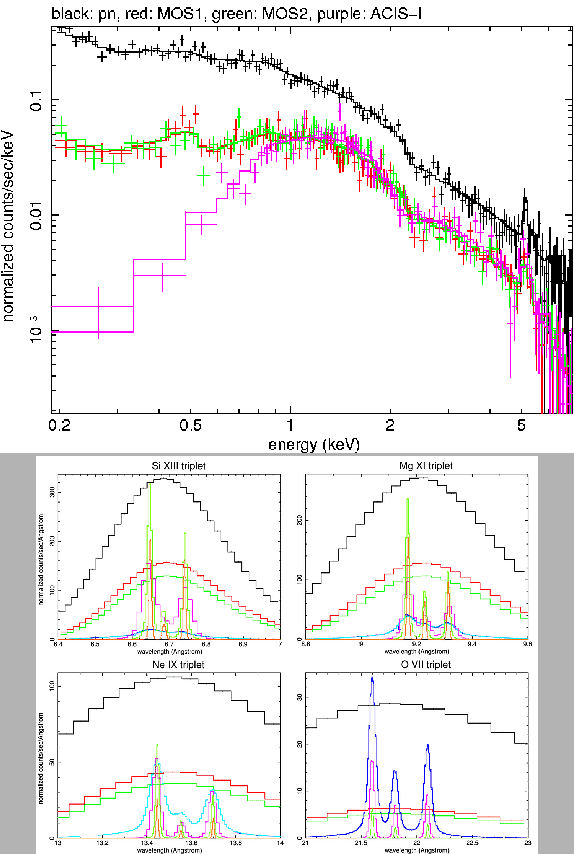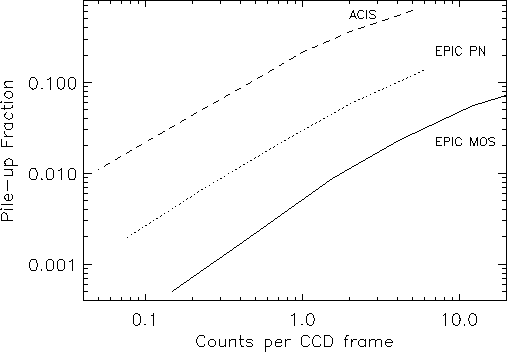Next: 4 Observing with XMM-Newton Up: 3.7.1 A comparison of XMM-Newton vs. Chandra Previous: 3.7.1.2 Non-dispersive spectroscopy: an example
It has been shown above (§ 3.3.9) how pile-up affects the accuracy of spectral fits and the shape of the X-ray PSF. Figs. 118 and 119 show the fraction of piled-up events for different numbers of counts per CCD frame (in full window imaging mode). One can see in Fig. 119 that pile-up effects for given source fluxes are more severe for ACIS-I by more than an order of magnitude compared to EPIC MOS and even by two orders of magnitude compared to EPIC pn.
 |
 |
European Space Agency - XMM-Newton Science Operations Centre